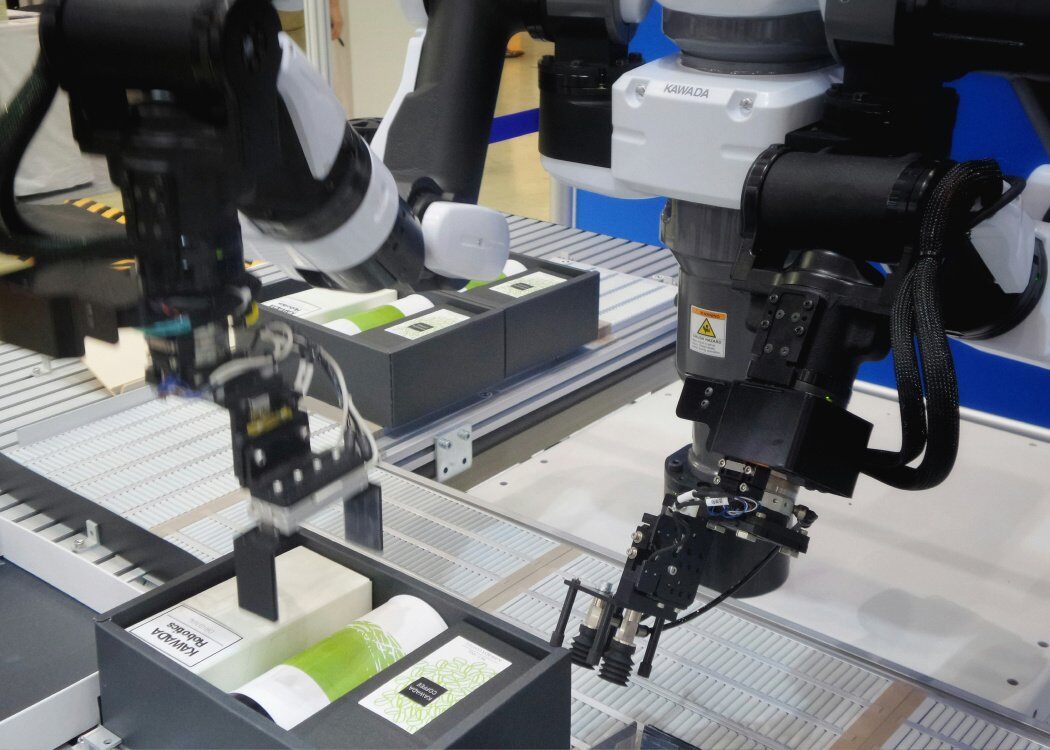Best practices for artwork automation in FMCG sector
Discover how artwork automation can transform the FMCG industry by streamlining packaging processes and overcoming common challenges.

FMCG (Fast-Moving Consumer Goods) companies often face challenges in managing product revision workflows due to the complexity and scale of their product ranges. For companies managing extensive product lines — sometimes exceeding 5,000 unique articles — the task of updating packaging becomes a significant operational endeavor. Our data shows an average update rate of 30-35% annually, indicating a complete overhaul of packaging information across all articles approximately every three years.
Each update typically entails about three revisions, with each revision requiring the attention of five approvers. This means each approver spends around one hour per revision. Over a three-year period, this process accumulates roughly 75,000 hours of review time, equating to about 25,000 hours each year dedicated solely to packaging revisions. This figure brings into perspective the sheer scale of effort involved in what might casually be referred to by management as 'a quick product update.'
Given these statistics, the question arises: How can companies streamline this exhaustive process? Some of our largest clients have successfully reduced the average number of revisions from three to just 1.1, significantly cutting down on time and labor costs.
This article explores the strategies and tools that can facilitate such efficiencies in the product packaging update process.
Efficient workflows require seamless communication among all stakeholders involved in product revisions, including marketing, design, legal, and production teams. Employing a centralized communication platform can facilitate this. Tools like Slack or Microsoft Teams can be integrated into the workflow to allow real-time updates and reduce the chances of miscommunication.
Managing revisions and approvals for product packaging can be significantly optimized by using a dedicated artwork management system. This system should support tracking changes, managing version control, and facilitating approvals. Such systems provide a structured process for submitting, reviewing, and approving artwork, ensuring that all stakeholders have access to the latest versions.
Automation can play a crucial role in reducing the time spent on repetitive tasks like filling out forms, updating status, and notifying team members about changes. By automating these processes, companies can focus more on strategic decisions and creative aspects of product packaging.
Utilizing data analytics to predict the outcomes of certain design changes can help in making informed decisions about when and how to revise product packaging. Predictive analytics can analyze consumer behavior and sales data to anticipate market trends and consumer preferences, guiding the timing and nature of product revisions.
Ensure that all team members are updated on the latest technologies and processes related to product revisions. Regular training sessions can help in keeping the team well-informed and skilled in using new tools and technologies that can aid in streamlining the workflow.
Before finalizing any product revision, it’s crucial to establish feedback loops with consumers and retailers. This can be achieved through market testing or focus groups. Feedback on packaging changes should be analyzed and incorporated into the design process to ensure the changes meet consumer expectations and maintain brand consistency.
Understanding the diversity of product packaging sizes and the printing techniques used across different materials is essential. This knowledge ensures that design changes can be implemented uniformly across various products, maintaining brand coherence and visual impact at the point of sale.
Often, legal changes or shifts in marketing strategies necessitate product revisions. Aligning these changes with marketing objectives can optimize the timing and effectiveness of product updates, turning a mandatory change into an opportunity for brand enhancement.
Cway®, with its sophisticated artwork management system, offers a transformative solution for companies looking to streamline their product revision workflows and significantly reduce the hours spent on packaging updates. By integrating Cway's software, companies can automate many of the manual processes involved in revisions, from initial submission to final approval. This not only minimizes the need for multiple revisions but also enhances collaboration across various departments, ensuring that all stakeholders can quickly and efficiently align on changes.
Moreover, Cway platform provides advanced tracking and reporting capabilities, allowing teams to monitor the status of revisions in real time and reduce delays caused by miscommunications or waiting for approvals. The ability to rapidly implement and track changes ensures that product updates can be executed with greater precision and at a faster pace, effectively reducing the annual hours dedicated to these tasks.
By adopting Cway, companies not only achieve a reduction in the time and labor associated with product packaging revisions but also enhance the overall agility and responsiveness of their branding efforts. This leads to quicker market adaptations, improved compliance with regulatory changes, and a stronger competitive edge.
The product packaging update process is a critical aspect of brand management and product marketing that involves revising and improving the packaging of a product. This process can include changes to the design, materials, and functional aspects of packaging to enhance visual appeal, improve user experience, or comply with regulatory changes. The aim is often to increase product attractiveness, convey brand values more effectively, or address practical concerns like sustainability or ease of use.
Streamlined packaging revisions are a strategic advantage for FMCG companies in a competitive market landscape. By optimizing the process of updating and improving product packaging, companies can enhance brand perception, react quickly to market changes, and reduce costs, which in turn contributes to increased competitiveness. Here’s how streamlined revisions play a crucial role:
1. Faster Time to Market
Streamlining revisions allows companies to bring updated products to market faster. This responsiveness is crucial for taking advantage of market trends or addressing emerging consumer demands. For instance, quickly updating packaging to highlight a product's eco-friendly attributes can capitalize on increasing consumer interest in sustainability.
2. Cost Efficiency
Reducing the time and resources needed for each revision cycle saves money. This efficiency is often achieved through automating routine tasks, minimizing the need for repeated physical prototypes by using digital proofs, and reducing the risk of errors that can lead to costly reprints. These savings can then be reallocated to other competitive strategies such as marketing campaigns or research and development.
3. Increased Agility
Streamlined workflows enhance a company's agility, allowing it to adapt packaging more swiftly to regulatory changes or competitive pressures. For example, if a competitor launches a new product feature that is gaining attention, a streamlined process helps a company quickly update its own packaging to compete more effectively.
4. Enhanced Brand Consistency
Consistency in branding across product lines reinforces brand recognition and loyalty. Streamlined revision processes help ensure that all packaging reflects the most current brand standards and messaging, which is vital when multiple products and variants are involved. This consistency builds a stronger, more unified brand image that consumers trust.
5. Improved Compliance
Regulatory compliance is critical, especially in industries like food and beverages, where packaging must frequently be updated to reflect ingredient changes or nutritional information. Streamlined revisions help ensure that packaging meets current regulations, avoiding legal penalties and protecting the brand’s reputation.
6. Better Consumer Engagement
By regularly updating packaging designs, companies can maintain consumer interest and engagement. Innovative and appealing packaging designs can attract new customers and delight existing ones, contributing to increased sales and market share.
7. Data-Driven Decisions
A streamlined process often incorporates feedback and analytics, allowing companies to make informed decisions about what works and what doesn’t in their packaging strategies. This data-driven approach leads to better-targeted updates that are more likely to succeed in the marketplace.
8. Sustainability Improvements
Efficient revision processes can also support sustainability goals. Companies can more quickly transition to eco-friendly materials and designs, reducing environmental impact and appealing to environmentally conscious consumers.
In summary, streamlined packaging revisions provide FMCG companies with the flexibility to respond dynamically to market changes, consumer preferences, and regulatory requirements, all while maintaining or improving cost efficiency and brand integrity. These capabilities are essential for staying competitive in the fast-paced FMCG sector.
Cway is indeed designed to facilitate packaging design updates, particularly for FMCG companies. Here’s how it stands out as a tool for managing such updates and how it compares to other options available in the market:
Key Features of Cway:
Centralized Artwork Management: Cway offers a centralized platform for managing all artwork assets. This helps ensure that all stakeholders have access to the most current versions, reducing errors and duplications in the design and approval processes.
Automated notifications and auto-compare between revisions.
Version Control: Cway provides robust version control capabilities, which are crucial when handling multiple revisions of packaging designs. This feature ensures that everyone is working on the latest version and that earlier versions can be easily accessed for reference or re-use.
Compliance and Regulatory Features: It includes features that help ensure compliance with industry-specific regulations, such as labeling requirements. This is particularly important in the FMCG sector, where compliance with health and safety standards is critical.
Integration Capabilities: Cway can integrate with other enterprise tools such as ERP (Enterprise Resource Planning) and CRM (Customer Relationship Management) systems, making it easier to align packaging design updates with broader business processes.

Discover how artwork automation can transform the FMCG industry by streamlining packaging processes and overcoming common challenges.

1 min read
Packaging redesign is the process of updating and improving the visual and functional aspects of a product's packaging to better align with current...

As global awareness of environmental issues rises, the packaging industry is experiencing a wave of new regulations aimed at reducing waste,...